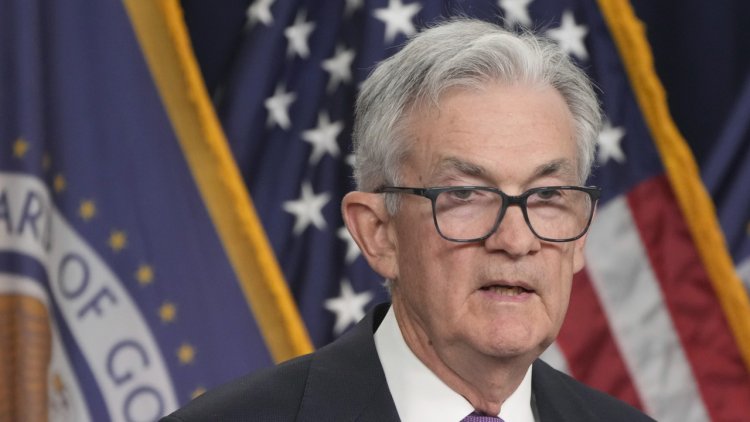The Fed just raised its forecast for the economy. Its chair sees risk in strikes, surging oil.
Federal Reserve officials on Wednesday gave the clearest signal yet that they expect to be able to beat inflation without causing a recession. But Chair Jerome Powell delivered a warning that new risks including surging oil prices — which he called "a significant thing" — and the autoworkers' strike could upend the forecasts. The central bank held interest rates steady for just the second time this year as it assesses the extent to which the highest borrowing costs in more than two decades are already helping tame inflation. Fed policymakers now expect the economy to grow 2.1 percent this year — a modest pace but still more than twice as fast as what they projected in June. They also see unemployment closing out the year at the current 3.8 percent rate, compared to their previous guess of 4.1 percent. The Fed meeting comes amid growing optimism that the U.S. can see an end to high inflation without a big jump in joblessness or a painful recession. The labor market has stayed strong a

Federal Reserve officials on Wednesday gave the clearest signal yet that they expect to be able to beat inflation without causing a recession.
But Chair Jerome Powell delivered a warning that new risks including surging oil prices — which he called "a significant thing" — and the autoworkers' strike could upend the forecasts.
The central bank held interest rates steady for just the second time this year as it assesses the extent to which the highest borrowing costs in more than two decades are already helping tame inflation.
Fed policymakers now expect the economy to grow 2.1 percent this year — a modest pace but still more than twice as fast as what they projected in June. They also see unemployment closing out the year at the current 3.8 percent rate, compared to their previous guess of 4.1 percent.
The Fed meeting comes amid growing optimism that the U.S. can see an end to high inflation without a big jump in joblessness or a painful recession. The labor market has stayed strong and consumers have continued spending, even as higher borrowing costs have begun to squeeze households and businesses.
The latest forecasts could be a boost for President Joe Biden, who would bear the brunt of the political fallout if a recession arrives before the 2024 election. How the economy fares over the next year will be key to determining not only who holds power in Washington, but also what kind of policies will be on the agenda for the next presidential term.
A so-called soft landing where the economy can avoid a downturn after a bout of inflation and rising rates would be remarkable, and historically rare. The Fed's main borrowing rate sits between 5.25 percent and 5.5 percent, just a year and a half after it stood near zero — the fastest increase in four decades.
Powell at his post-meeting press conference said he’s still not convinced the economy will definitively avoid recession but said “a soft landing is a primary objective.”
There's no guarantee that other factors won't complicate the Fed's job by jolting the economy: Increasing oil prices and the auto strike have the potential to spark temporary spikes in inflation, while a looming government shutdown could hurt growth, depending on how long it drags on, he said.
Powell said the strike against all three Detroit automakers “could affect economic output, hiring and inflation.”
“That’s going to depend on how broad it is and how long it’s sustained for,” he said.
Higher energy prices can eat heavily into consumers’ budgets and make people more pessimistic about the possibility of more price increases. That's a situation the Fed wants to avoid as it tries to keep inflation from becoming entrenched in people’s minds.
“Energy prices being higher, that is a significant thing,” the Fed chief said. “We tend to look through short-term volatility and look at core inflation [which excludes food and energy]. But, so, the question is, how long will higher prices sustain?”
For now, Fed officials' inflation outlook is largely unchanged. They still expect their preferred inflation measure, the personal consumption expenditure index, to drop to 2.5 percent next year and to just a notch above their 2 percent target in 2025.
That index shows prices rose 3.3 percent over the 12 months ending in July — above the Fed’s 2 percent target but far better than the pace of inflation last year.
Fed officials are split on the need for another rate hike this year, with 12 members of the board projecting one more will be called for and the other seven saying the central bank will be able to hold where it is.
Katy O’Donnell contributed to this report.
What's Your Reaction?













